
In this lesson, the Internet is used as a resource for students to access daily (and hourly) information about air quality.
- Subject:
- Applied Science
- Environmental Science
- Material Type:
- Activity/Lab
- Lesson Plan
- Date Added:
- 10/02/2019

In this lesson, the Internet is used as a resource for students to access daily (and hourly) information about air quality.

Using scrap metal and spare parts, William Kamkwamba created a windmill to harness the wind and bring electricity and running water to his Malawian village. The resource includes a lesson plan/book card, a design challenge, and copy of a design thinking journal that provide guidance on using the book to inspire students' curiosity for design thinking. Maker Challenge: Develop a way to harness the wind by designing with Strawbees.
A document is included in the resources folder that lists the complete standards-alignment for this book activity.
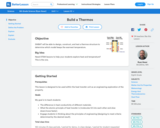
Objective
SWBAT will be able to design, construct, and test a thermos structure to determine which model keeps the warmest temperature.
Big Idea
Need STEM lessons to help your students explore heat and temperature? This is the one.
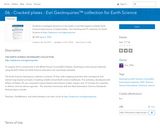
In this activity, students investigate dynamics in the earth's crust that explain multiple Earth Science phenomena.
GeoInquiries are designed to be fast and easy-to-use instructional resources that incorporate advanced web mapping technology. Each 15-minute activity in a collection is intended to be presented by the instructor from a single computer/projector classroom arrangement. No installation, fees, or logins are necessary to use these materials and software.

CK-12 Earth Science For Middle School covers the study of Earth - its minerals and energy resources, processes inside and on its surface, its past, water, weather and climate, the environment and human actions, and astronomy.
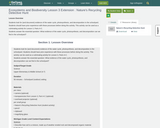
Students look for (and document) evidence of the water cycle, photosynthesis, and decomposition in the schoolyard. Students should have prior experience with these processes before doing this activity. This activity can be used as a culminating activity for Lesson 3, Parts A-C.Students answer the essential question: What evidence of the water cycle, photosynthesis, and decomposition can we find in the schoolyard?
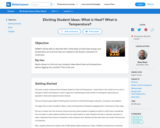
Objective
SWBAT will be able to describe their initial ideas of what heat energy and temperature are and how they are related to the kinetic movement of molecules.
Big Idea
Need a lesson to find out your students ideas about heat and temperature before digging into content? This is the one.
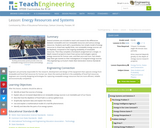
Several activities are included to teach and research the differences between renewable and non-renewable resources and various energy resources. The students work with a quantitative, but simple model of energy resources to show how rapidly a finite, non-renewable energy sources can be depleted, whereas renewable resources continue to be available. The students then complete a homework assignment or a longer, in-depth research project to learn about how various technologies that capture energy resources for human uses and their pros and cons. Fact sheets are included to help students get started on their investigation of their assigned energy source.

Using this lesson plan students will be more aware of how plants and animals adapt to wildland fire. They will: Discuss the adaptive strategies of plants and animals to survive fire. Observe plants and animals in your local area. Design a plant or animal that is adapted for fire survival.
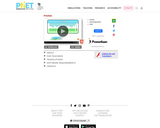
Learn how friction causes a material to heat up and melt. Rub two objects together and they heat up. When one reaches the melting temperature, particles break free as the material melts away.
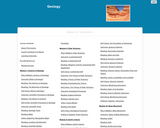
When you ask the question What is geology? most people will initially respond that it is the study of rocks. This is true, but geology is also so much more than that. The truth is that geology is an intricate part of your everyday life.

Meet savvy scientist and inventor Hedy Lamarr, also known for her career as a glamorous international movie star. Dubbed "The Most Beautiful Woman in the World," Hedy actually preferred spending time creating inventions in her workshop to strutting down the red carpet. Hedy co-invented the technology known as frequency hopping, which turned out to be one of the most important scientific breakthroughs of the twentieth century! Today's cell phone, computers, and other electronic devices would be more vulnerable to hacking without the groundbreaking system discovered by a world-famous actress and gifted inventor. The resource includes a lesson plan/book card, a design challenge, and copy of a design thinking journal that provide guidance on using the book to inspire students' curiosity for design thinking. Maker Challenge: Create small groups. Pass out one of the challenges listed in the lesson plan/book card to each group for them to come up with an invention that will solve the problem at hand.
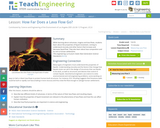
While learning about volcanoes, magma and lava flows, students learn about the properties of liquid movement, coming to understand viscosity and other factors that increase and decrease liquid flow. They also learn about lava composition and its risk to human settlements.

Meg set out to climb up and investigate the rain forest tree canopies — and to be the first scientist to do so. But she encountered challenge after challenge. Male teachers would not let her into their classrooms, the high canopy was difficult to get to, and worst of all, people were logging and clearing the forests. Meg never gave up or gave in. She studied, invented, and persevered, not only creating a future for herself as a scientist, but making sure that the rainforests had a future as well. The resource includes a lesson plan/book card, a design challenge, and copy of a design thinking journal that provide guidance on using the book to inspire students' curiosity for design thinking. Maker Challenge: Your community has many different areas to explore - it might be a park, a grocery store, a forest, or an alley. For some people, it might be difficult to explore these areas because they may have differing abilities. Select one area in your community, and come up with a plan to build a way for it to be more accessible to everyone.
A document is included in the resources folder that lists the complete standards-alignment for this book activity.
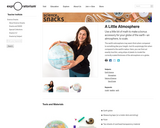
The earth’s atmosphere may seem thick when compared to something like your height—but it’s surprisingly thin when compared to the earth’s radius. Here, you can find out exactly how thin, using strips of plastic to model the correctly scaled thickness of the atmosphere on a globe.

In this group of activities students will investigate their schoolyard or other nearby space in orderto identify what is around them and arrive at the definition of an ecosystem. Students will take a walk or go to a specific location to observe the types of constructed and natural features that are there. Students will record their observations and then begin to categorize their findings into living and non- living things. Once students have identified the living things, they will discuss what living things need to survive. Students will learn new terms, biotic and abiotic, and review what a habitat is as they discuss the components of an ecosystem. Students will also be introduced to the term biodiversity.
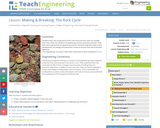
Students learn the components of the rock cycle and how rocks can change over time under the influence of weathering, erosion, pressure and heat. They learn about geotechnical engineering and the role these engineers play in the development of an area of land, the design and placement of new structures, and detection of natural disasters.

Analyze the quantities and origins of basic mineral resources.
GeoInquiries are designed to be fast and easy-to-use instructional resources that incorporate advanced web mapping technology. Each 15-minute activity in a collection is intended to be presented by the instructor from a single computer/projector classroom arrangement. No installation, fees, or logins are necessary to use these materials and software.

A young girl has a wonderful idea to make the most MAGNIFICENT thing! But making her magnificent thing is anything but easy, and the girl repeatedly tries and fails. Eventually, she quits, but a walk with her dog and time to think, she comes back to her project with renewed enthusiasm and manages to get it just right. The resource includes a lesson plan/book card, a design challenge, and copy of a design thinking journal that provide guidance on using the book to inspire students' curiosity for design thinking. Maker Challenge: Create small groups. Pass out one of the challenges listed in the lesson plan/book card to each group for them to come up with an invention that will solve the problem at hand.
A document is included in the resources folder that lists the complete standards-alignment for this book activity.
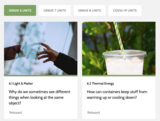
OpenSciEd middle school is NGSS-aligned science curriculum. Designed for all students and teachers, OpenSciEd includes student-facing materials as well as teacher guides. As with most instructional materials, excellent professional learning for teachers should be provided. For more information in Michigan contact the Michigan Mathematics and Science Leadership Network, starrm@mimathandscience.org